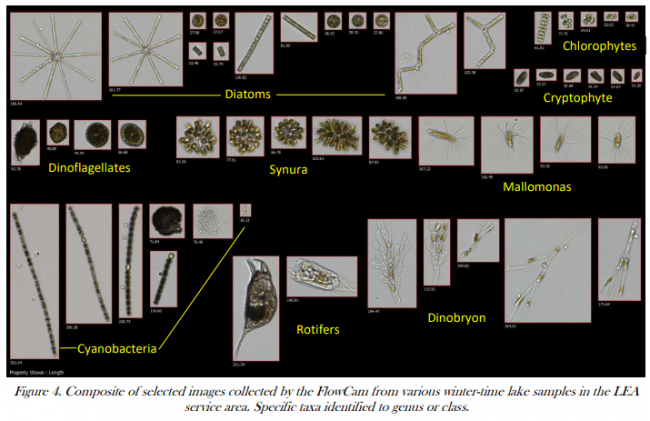
May – LEA’s water testing team collected the first fluorometer profile in mid-May. Fluorescence values remained low and uniform throughout the water column at this time.
June – In the upper waters, fluorescence values increased with depth, reaching a peak at 2 meters. In the deeper waters, algae concentrations returned to low levels.
July – In the upper waters, fluorescence values gradually increased with depth, reaching a peak near the thermocline at 3 meters. Below the peak, algae concentrations, quickly dropped and returned to low levels.
August – No clear fluorescence peak was noted this month. Fluorescence values remained fairly low and uniform throughout the water column.
September – In the upper waters, fluorescence values gradually increased until reaching a mild peak at 2 meters. Overall, fluorescent values remained fairly low throughout the water column.
Synopsis: Algae concentrations were fairly low throughout the water column in May, August, and September. There were distinct upticks in algae growth between 2 and 3 meters in June and July bringing concentrations to moderate levels at those depths.
Gloeotrichia echinulata (a type of cyanobacteria (blue-green algae) commonly found in low-nutrient waters) can be seen with the naked eye. Gloeo density is reported as a value ranging from 0 – 6, based on the number of Gloeo colonies seen through a Secchi scope. Higher values indicate more Gloeo colonies. The north basin’s Gloeotrichia echenulata density ranged from 0 through 1 with the highest density occurring in early September.

